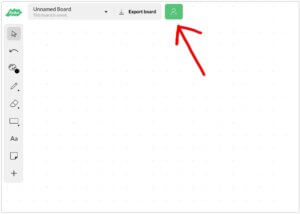There are tons of resources out there if you’re trying to teach online. I’ve been teaching online for the last 13 years, and have found these five tools to be the most effective as an alternative to in-person classes.
1. Zoom
Zoom, like Skype is a video conferencing platform. This is great because you don’t have to download the full app the way you do for Skype—students can just click on a link and a Zoom window will open up in their web browsers. They offer a free version and a premium version. So if you’re using the free version of Zoom, you have to work within the constraints (time limits, etc.). What I like about Zoom is that it lets me share my screen really easily. If I have a slide deck, I can pull that PowerPoint or Keynote presentation up and get all my students looking at the same thing. There is also an in-app feature that lets participants ‘raise their hands’ so students can do so without talking over each other.
Remember, when you’re teaching online, you want to follow a few simple rules: You want a direct line of communication with your students. That’s why we use WhatsApp. You want to wait for students to collaborate and work together. That’s what’s great about Google Docs. You also want to be able to focus everyone’s attention on the same thing. That’s where AWW App comes in. It’s also nice, when you’re working remotely, to remind kids that teaching is still very much a personal medium. That’s why it can be important to check in every so often and show your face on a video platform like Skype or Zoom.
2. Google Docs
This is so easy. So many teachers use Google Docs already, but possibly not in all the ways they could. Think about what Google Docs offers. It’s a low bandwidth activity students can use on their phones or on their computers. If you want, you can have 50 people editing a document together as part of an assignment. That may seem a little chaotic, but it’s a great way to get everyone working together in one place, and seeing that work happen in real time.
Not only can you follow what everyone in the document is doing (thanks to distinguishable color coding), but you can also look at the comment history, and keep a record of the contributions everyone has made.You can also really monitor your students’ behavior inside this document. If you are worried about the chaos of having, let’s say, 50 students writing in one place, you could simply divide them into groups of 10, and watch what they all do across five separate Google Docs that you keep open in one browser.
You don’t need specialized software for this and there are so many ways to utilize it. You can build a discussion board right inside a Google Doc. If your students are writing essays for a class, maybe they can build them paragraph by paragraph inside Google Docs. Students can chat with you, or one another, inside this platform; all the communication, all the group work, all the editing stays in one place. I love Google Docs.
3. AWW App
This is an online whiteboard. They offer a free version and a premium version. But the free version is going to be really useful for those of you teaching math, or science, or any subject where you want students working on a problem together. It’s very easy to add students to a blank board. You just press this green button:

And then copy the link that pops up:

You can then send it to your students by email or WhatsApp, or whichever way you’re communicating with them. Then all your students can be there looking at the same board, at the same time, in real time.
You can draw on the board pretty easily. It’s a little awkward to do at first, but once you get used to it, it’s not that bad. Another thing you can do is take a photo or screenshot of a problem, import it into the whiteboard, and then write on top of that. A little like they used to do back in the good old days with overhead projectors. This is a really valuable way of getting all of your students to focus their attention on one thing that’s not a floating head talking at them. If you’re using AWW to work out a problem, you can also export the finished problem and send it to all your students.
Note, there’s no video, and no audio – it’s not an all-in-one platform solution, but it’s a great place to have your students eyes locked into the same resource.
4. Skype
Skype is one of the most popular video platforms out there, and both the phone and desktop apps are free and easy to download. A lot of your students will already have a Skype account—which is already a good reason to use it. Definitely use Skype if a lot of your students are plugged in. Those who are not already plugged in will have to download the app separately, which is only a minor inconvenience considering that Skype is completely free. It doesn’t have a lot of restrictions and it also lets you share your desktop screen with your students, which is really important.
5. WhatsApp
This is really important for me because I need a direct line of reciprocal communication with my students outside of a live online platform like Facebook or Instagram Live. Email doesn’t really suit these purposes because most students aren’t necessarily on or checking their email at all times. I need to work with my students where they are, which is on their phones. And I can reach them on their phones through WhatsApp.
What’s nice about WhatsApp is that it’s fully encrypted. And it’s an international platform which works anywhere, for free. You can easily download the app on your phone and desktop, and it works pretty much exactly like a regular text-messaging app (iMessage for example). It’s a great method of directly reaching your students in a way that will feel like second nature to them, but in a separate channel from their personal text messages. WhatsApp will let you create large group threads, so you can choose to message students individually, in smaller groups, or all at once.
Before you commit to using WhatsApp with your students, do make sure that it is in keeping with your school’s policies about phone and social media usage. There are also some similar messaging platforms to WhatsApp, but I have found this particular app to be very intuitive and easy to use. Whatever channel you use, whether it’s WhatsApp or something else, it should be the most direct way to reach your students.
These are my five favorite resources for teaching online, but remember the most important thing is that you end up using the tools that work best for you and your students.
Zoom is a very user-friendly and cost-effective option if you are looking for an online class space to host your class sessions.

John Moscatiello is the founder of Marco Learning. He has been a teacher, tutor, and author since 2002. Over the course of his career, John has taught more than 4,000 students, trained hundreds of teachers, written content for 13 test preparation books, and worked as an educational consultant in more than 20 countries around the world.
 Help
Help